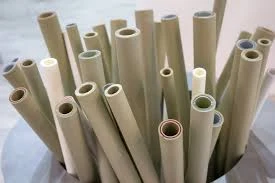
-
 Afrikaans
Afrikaans -
 Albanian
Albanian -
 Amharic
Amharic -
 Arabic
Arabic -
 Armenian
Armenian -
 Azerbaijani
Azerbaijani -
 Basque
Basque -
 Belarusian
Belarusian -
 Bengali
Bengali -
 Bosnian
Bosnian -
 Bulgarian
Bulgarian -
 Catalan
Catalan -
 Cebuano
Cebuano -
 China
China -
 China (Taiwan)
China (Taiwan) -
 Corsican
Corsican -
 Croatian
Croatian -
 Czech
Czech -
 Danish
Danish -
 Dutch
Dutch -
 English
English -
 Esperanto
Esperanto -
 Estonian
Estonian -
 Finnish
Finnish -
 French
French -
 Frisian
Frisian -
 Galician
Galician -
 Georgian
Georgian -
 German
German -
 Greek
Greek -
 Gujarati
Gujarati -
 Haitian Creole
Haitian Creole -
 hausa
hausa -
 hawaiian
hawaiian -
 Hebrew
Hebrew -
 Hindi
Hindi -
 Miao
Miao -
 Hungarian
Hungarian -
 Icelandic
Icelandic -
 igbo
igbo -
 Indonesian
Indonesian -
 irish
irish -
 Italian
Italian -
 Japanese
Japanese -
 Javanese
Javanese -
 Kannada
Kannada -
 kazakh
kazakh -
 Khmer
Khmer -
 Rwandese
Rwandese -
 Korean
Korean -
 Kurdish
Kurdish -
 Kyrgyz
Kyrgyz -
 Lao
Lao -
 Latin
Latin -
 Latvian
Latvian -
 Lithuanian
Lithuanian -
 Luxembourgish
Luxembourgish -
 Macedonian
Macedonian -
 Malgashi
Malgashi -
 Malay
Malay -
 Malayalam
Malayalam -
 Maltese
Maltese -
 Maori
Maori -
 Marathi
Marathi -
 Mongolian
Mongolian -
 Myanmar
Myanmar -
 Nepali
Nepali -
 Norwegian
Norwegian -
 Norwegian
Norwegian -
 Occitan
Occitan -
 Pashto
Pashto -
 Persian
Persian -
 Polish
Polish -
 Portuguese
Portuguese -
 Punjabi
Punjabi -
 Romanian
Romanian -
 Russian
Russian -
 Samoan
Samoan -
 Scottish Gaelic
Scottish Gaelic -
 Serbian
Serbian -
 Sesotho
Sesotho -
 Shona
Shona -
 Sindhi
Sindhi -
 Sinhala
Sinhala -
 Slovak
Slovak -
 Slovenian
Slovenian -
 Somali
Somali -
 Spanish
Spanish -
 Sundanese
Sundanese -
 Swahili
Swahili -
 Swedish
Swedish -
 Tagalog
Tagalog -
 Tajik
Tajik -
 Tamil
Tamil -
 Tatar
Tatar -
 Telugu
Telugu -
 Thai
Thai -
 Turkish
Turkish -
 Turkmen
Turkmen -
 Ukrainian
Ukrainian -
 Urdu
Urdu -
 Uighur
Uighur -
 Uzbek
Uzbek -
 Vietnamese
Vietnamese -
 Welsh
Welsh -
 Bantu
Bantu -
 Yiddish
Yiddish -
 Yoruba
Yoruba -
 Zulu
Zulu
High-Performance Fiberglass Piping Solutions for High-Pressure Applications and Durability
High-Pressure Fiberglass Piping Systems An Overview
High-pressure fiberglass piping systems have become increasingly popular in various industrial applications due to their exceptional strength, corrosion resistance, and lightweight properties. These systems combine advanced engineering with innovative materials, making them a preferred choice in environments where reliability and performance are paramount.
Composition and Design
Fiberglass piping, also known as fiberglass reinforced plastic (FRP) piping, is composed of a polymer matrix reinforced with glass fibers, creating a composite material that is both sturdy and flexible. The manufacturing process involves the careful layering of glass fibers and resin, which not only enhances the mechanical properties but also allows for customization in design. This adaptability makes fiberglass pipes suitable for a variety of applications, including oil and gas extraction, water treatment, and chemical processing.
The design of high-pressure fiberglass piping systems takes into account the need for maintaining structural integrity under increased loads. These systems are engineered to withstand internal pressures that far exceed those of traditional piping materials. As such, they provide significant advantages in terms of safety and performance, particularly in critical applications where failure could lead to costly downtime or hazardous situations.
Advantages of High-Pressure Fiberglass Piping
1. Corrosion Resistance One of the most significant benefits of fiberglass piping is its innate resistance to corrosion. Unlike metal pipes that can deteriorate when exposed to harsh chemicals or weather conditions, fiberglass remains untouched, significantly extending the lifespan of the system. This aspect is particularly crucial in industries that handle corrosive substances.
2. Lightweight High-pressure fiberglass pipes are considerably lighter than their metal counterparts. This lightweight property not only makes handling and installation easier but also reduces the overall load on supporting structures. It can result in lower installation costs and faster construction timelines.
high-pressure fiberglass piping system

3. Thermal Insulation Fiberglass has excellent thermal insulating properties, which help in maintaining the temperature of the fluids being transported. This insulation can be essential in processes where temperature stability is critical to the efficiency and effectiveness of operations.
4. Low Maintenance Due to their resistance to corrosion and other environmental factors, fiberglass piping systems require significantly less maintenance compared to traditional piping. Reduced maintenance needs mean lower operational costs and less downtime, contributing to enhanced productivity.
Applications
High-pressure fiberglass piping systems are widely used in various sectors, including
- Oil and Gas In the extraction and transportation of oil and natural gas, these systems provide the necessary strength and resistance to harsh environmental conditions. - Water Treatment Fiberglass pipes are employed in water and wastewater treatment facilities, where their resistance to corrosion ensures long-term efficacy. - Chemical Processing In chemical plants, fiberglass systems effectively transport a wide range of corrosive chemicals without the risk of leaks or spills.
Conclusion
In conclusion, high-pressure fiberglass piping systems represent a forward-thinking evolution in industrial piping solutions. Their unique properties—such as corrosion resistance, lightweight design, and low maintenance requirements—set them apart from traditional piping materials. As industries continue to push the limits of performance and safety, the adoption of high-pressure fiberglass piping systems is likely to grow, offering robust, reliable, and efficient solutions for modern challenges. Their ability to handle demanding applications while minimizing maintenance needs positions them as an essential component in the future of industrial infrastructure.
Latest news
-
Exploring the Benefits of Top Hammer Drifter Rods for Enhanced Drilling PerformanceNewsJun.10,2025
-
High-Precision Fiberglass Winding Machine for GRP/FRP Pipe Production – Reliable & Efficient SolutionsNewsJun.10,2025
-
FRP Pipes & Fittings for Shipbuilding - Corrosion-Resistant & LightweightNewsJun.09,2025
-
Premium FRP Flooring Solutions Durable & Slip-ResistantNewsJun.09,2025
-
Premium Fiberglass Rectangular Tanks Durable & Lightweight SolutionNewsJun.09,2025
-
Tapered Drill String Design Guide Durable Performance & UsesNewsJun.09,2025









